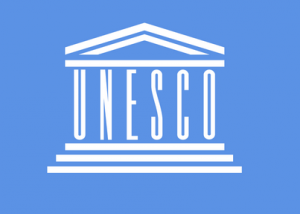Donor funding for education in Africa continues to fall – UNESCO
 Attaining the Sustainable Development Goal (SDG 4) to provide every child with 12 years of quality education by 2030, would be an uphill task as funding for education in sub-Saharan Africa continues to fall.
Attaining the Sustainable Development Goal (SDG 4) to provide every child with 12 years of quality education by 2030, would be an uphill task as funding for education in sub-Saharan Africa continues to fall.
A press release from UNESCO citing the Global Education Monitoring (GEM) report which the UN organization produces, shows that aid to basic education in the region has returned to 2002/2003 levels.
Latest aid figures for education estimated by the report, show that levels went down by almost $600 million, or 4 per cent, between 2013 and 2014.
“The share of total aid being allocated to education also fell from 9.5 per cent to 8.2 per cent, indicating that the sector is falling further down the list of priorities for donors,” it added.
The figures show that aid to basic education, providing for pre-primary and primary education as well as basic life skills, has decreased by 5 per cent since 2013, noting that that figure is an even greater fall than for education as a whole.
“And this while out of school numbers for primary education are on the rise, totaling 59 million by latest counts according to the UNESCO Institute for Statistics,” it noted.
According to UNESCO, the GEM Report has previously calculated that aid to education needs to increase by at least six times to fill the annual finance gap of $39 billion in order to provide the global target of 12 years of quality education for all by 2030.
“Yet the latest analysis shows that, rather than rising, levels of aid to the sector are 8% lower than they were in 2010. To fill the remaining gap and reach the target, these aid levels now need to increase seven-fold,” UNESCO said.
“It is disheartening to see that international aid to education is going in totally the wrong direction. This will make education progress extremely difficult, if not impossible, for many countries still reliant on financial support from donors. And early indications of aid flows for 2015 do not leave much room for optimism,” Aaron Benavot, Director of the GEM Report, UNESCO was quoted as saying.
Aid to education is still not going where it is needed most, the report concluded.
The report indicates that smaller shares of aid to basic education are being allocated to the poorest countries, where the need is greatest, dropping a sixth since 2002-3 levels.
“The share received by sub-Saharan Africa of total aid to basic education has fallen from 49 per cent in 2002/03 to 28 per cent in 2014, even though the region accounts for over half of all out-of-school children,” it said.
According to the report, between 2013 and 2014, four donors, France, Japan, Netherlands, and Spain, reduced aid to basic education by 40 per cent or more. The United Kingdom reduced aid to basic education by 21 per cent, or almost twice its rate of reduction of total aid to education, and is no longer the largest bilateral donor. Its place has been taken by the United States, which increased aid to basic education by $164 million or 23 per cent.
“Governments around the world have just signed up to an enormously ambitious and promising vision for education and lifelong learning over the next fifteen years, an agenda they know is crucial if even greater ambitions for sustainable development are to be realized by 2030. Do they think such an agenda can be achieved if there aren’t sufficient funds to carry out the work?” Benavot asked.
By Emmanuel K Dogbevi
